-
 UNSOS Standard 10 Person Tent Brief Relief Privacy Shelter
UNSOS Standard 10 Person Tent Brief Relief Privacy ShelterOther Relief/Emergency Tent
-
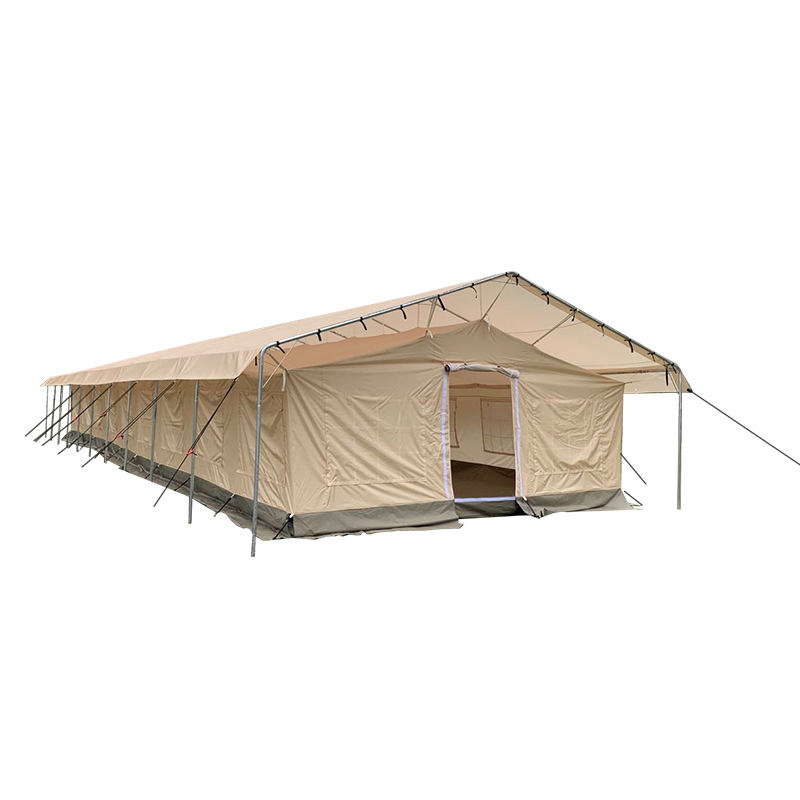 UNSOS Standard 30 Person Tent Disaster Relief Tents
UNSOS Standard 30 Person Tent Disaster Relief TentsOther Relief/Emergency Tent
-
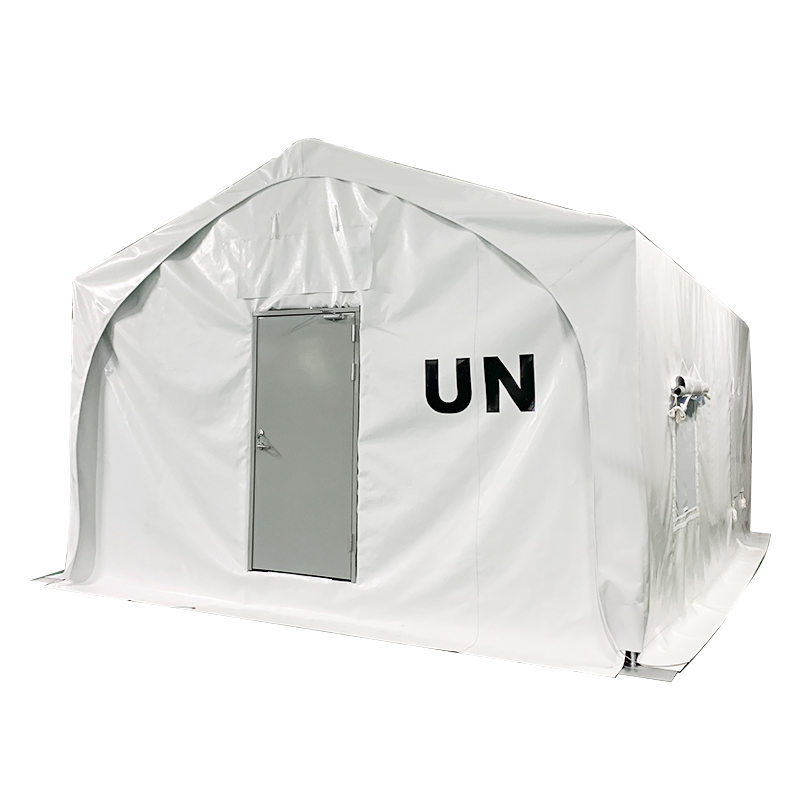 5x7m Typa a Membrane Covered Steel Frame Structure Relief Tent
5x7m Typa a Membrane Covered Steel Frame Structure Relief TentOther Relief/Emergency Tent
Relief Emergency Refugee Tent Manufacturers
Products & Solutions
CONTACT US
-

+86 15695147631
-

-

No.9 Kangmin Road, Automobile industry Park, Yizheng City, Jiangsu Province, China
These Tents are used for Relief purposes, in times of distress, such as war or calamity. These Tents can be Double Fly or Single Fly Water-repellent + rot resistant Cotton Canvas Tents. Or more durable and water proof, HDPE (High Density Polyethylene) or PVC or polyester Tents. We also initiate to use TPU, TPO material for a environmental friendly and harmless purpose.
We believe in Quality work only, and keeping this in mind, we never take advantage of the situation by supplying old or rotten canvas tents, like some suppliers have done in the past. We believe that if you wish to do charity, by donating Refugee Tents, do it with a good heart. In place of looking for Quantity, look for good Quality Tents. It might take us some time to make the Relief Tents and supply you, but we will never compromise in the quality of the canvas used or stitching of the tents.
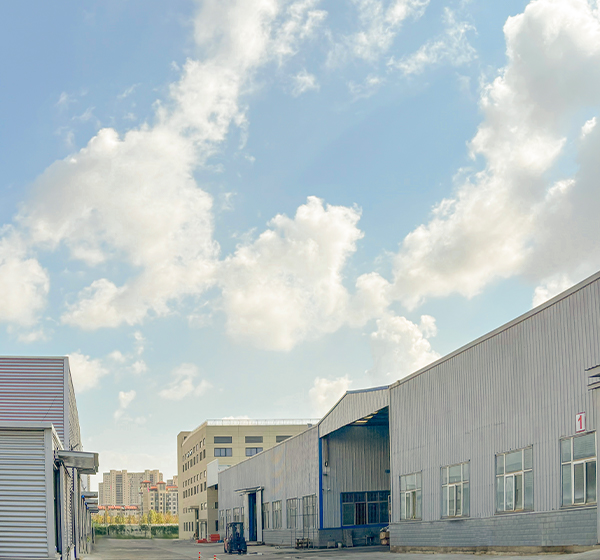
-
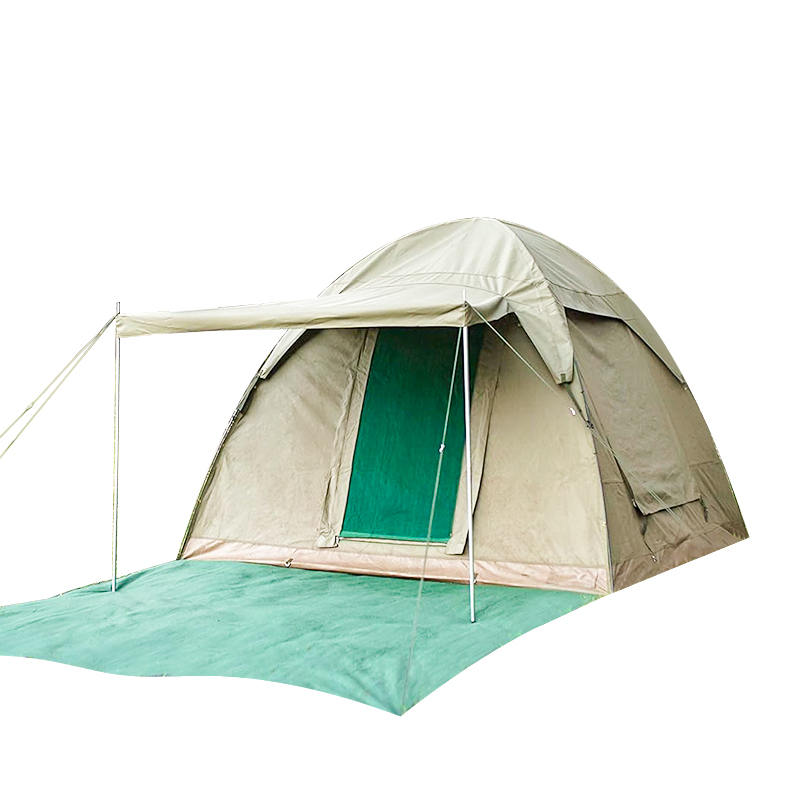
What Do Waterproof Ratings for Camping Backpacking Tents Actually Mean? Waterproof ratings (measured in millimeters, mm) quantify a tent’s ability to resist water penetration, based on standardized hydrostatic head testing. The rating represents the height of a water column the t...
READ MORE -
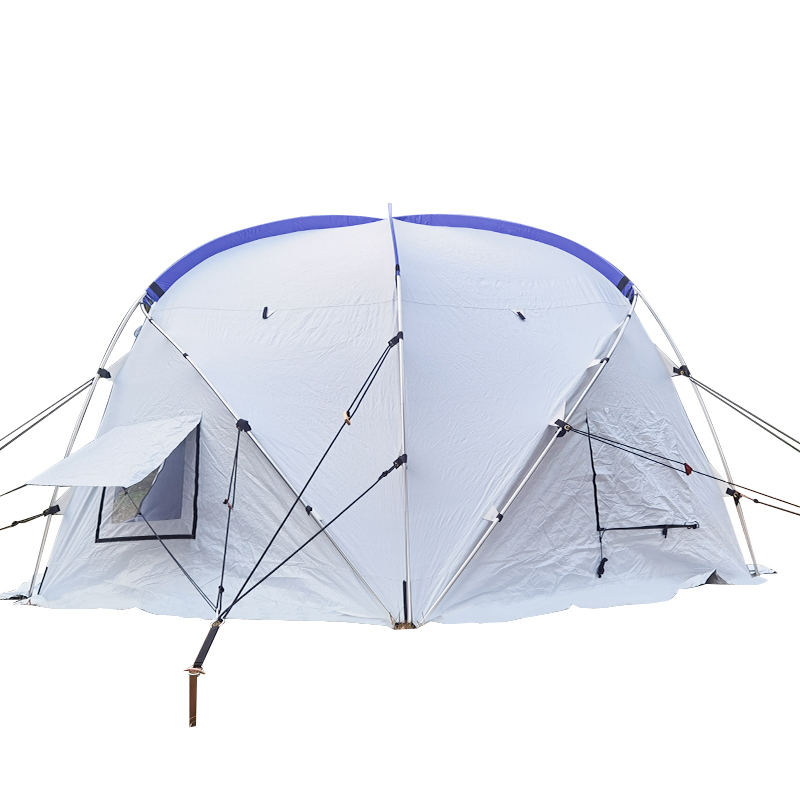
What core fabrics lay the foundation for windproof and waterproof relief tent? The windproof and waterproof performance of relief tent starts with the selection of core fabrics, which must withstand harsh natural conditions such as strong winds, heavy rains, and even hailstorms i...
READ MORE -
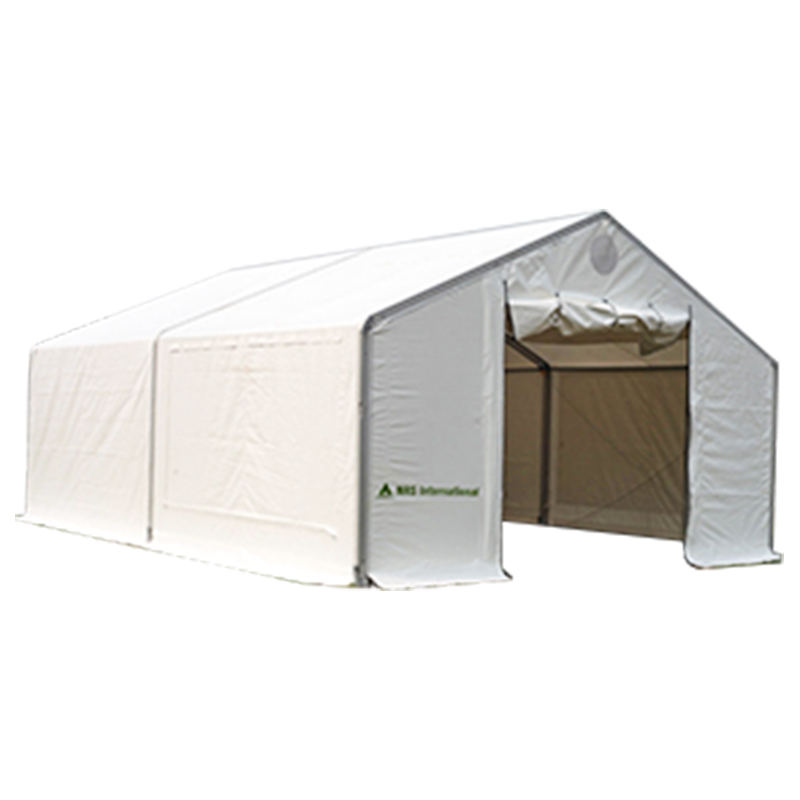
What Cost Advantages Make Warehouse Tents More Economical Than Traditional Warehouses? The core appeal of warehouse tents lies in their significant cost savings, which can reach up to 50% compared to traditional brick-and-mortar warehouses. First, the construction cost is far low...
READ MORE
I. Other Relief/Emergency Tents cover special scenario models in addition to standard disaster relief tents. What are the common sub-categories, and which niche but critical emergency scenarios are they suitable for?
Other Relief/Emergency Tents are subcategorized by niche emergency scenarios. Common types include: 1. "Micro Emergency Tents," which are compact and lightweight, suitable for temporary shelter for one person (such as hikers caught in sudden downpours or outdoor workers). They fold quickly and fit into a backpack, meeting immediate emergency needs. 2. "Medical Isolation Tents," which are airtight and easily disinfected, feature internal buffer and isolation zones, making them suitable for temporary isolation during infectious disease outbreaks to prevent the spread of the virus. 3. "Children's Emergency Tents," featuring rounded corners and bright colors to alleviate children's fears, a child-friendly design, and simple storage bags for toys and clothing, making them suitable for temporary shelter after disasters. 4. "Heavy Duty Equipment Protection Tents," with thick, durable fabric and a strong frame, can cover large disaster relief equipment (such as generators and medical equipment) to protect them from damage. These subcategories fill the gaps in the adaptability of standard disaster relief tents for niche scenarios.
II. Other Relief/Emergency Tents: For niche emergency scenarios (such as mountain rescue, urban flooding, and epidemic quarantine), what limitations of conventional disaster relief tents must be overcome in terms of performance design to meet the specific needs?
For niche emergency scenarios, it is necessary to break through conventional limitations in terms of "scenario-specific performance." Mountain rescue scenarios involve steep terrain and confined spaces, so tents must be designed to be lightweight and easy to secure. They should be equipped with a climbing rope anchoring system (instead of traditional ground spikes) for stable erection on rocky surfaces, and the fabric should be scratch-resistant to withstand the friction of sharp mountain rocks. Urban flooding scenarios involve deep water and complex environments, so tents must be both buoyant and waterproof. An inflatable buoyancy layer at the bottom allows for temporary buoyancy in accumulated water, the fabric should be highly waterproof, and the door should feature a high-water protection structure to prevent water infiltration. Epidemic isolation scenarios require tents to be leak-proof and easily disinfected. Tent seams are heat-sealed to prevent virus transmission through gaps, and the fabric should be smooth and disinfectant-resistant. Independent ventilation systems ensure one-way air circulation, reducing the risk of cross-infection. These targeted performance designs address the shortcomings of conventional tents in niche scenarios.
III.Other Relief/Emergency Tents are often used for temporary emergency situations. However, what standards must be met for single-use reliability and quick activation to be effective in emergencies?
To ensure effectiveness in emergencies, clear standards for reliability and convenience are needed. Regarding single-use reliability, the fabric must be highly tear-resistant to withstand the strain and friction experienced in emergency situations. Waterproofing must pass long-term hydrostatic pressure testing and show no leakage. The frame must withstand strong winds without deformation or collapse. Regarding ease of use, setup must meet the "tool-free + short-time" standard: A single person can complete the setup in a short time, utilizing quick-opening brackets or an inflatable structure, eliminating the need for additional tools. Once folded, the tent must be compact enough for quick transport by hand, shoulder, or vehicle. Furthermore, the packaging must feature an "emergency opening" (such as a tear-off seal) to quickly remove the tent without the need for scissors, ensuring it's readily accessible, usable, and reliable in emergencies.
IV.Other Relief/Emergency Tents must meet the needs of different groups (e.g., the elderly, children, and people with disabilities). What humanistic considerations should be incorporated into the design details to enhance the user experience in emergency situations?
To address the differences in usage among different groups, design details should incorporate humanistic considerations. For elderly users, focus on convenience and safety: The tent door is designed with a wide width to facilitate entry and exit for the elderly; non-slip and moisture-proof mats are laid on the floor to prevent slips; handrails are installed on the interior walls to assist with standing and moving; and a simple lighting system (such as a push-button flashlight fixed to the interior wall) is provided to meet the needs of elderly users at night. For children, focus on safety and comfort: The frame features fully rounded corners, eliminating sharp edges; the fabric is non-toxic and environmentally friendly (odorless and non-irritating); the interior features cartoon designs and a simple toy storage pocket to alleviate children's fear in emergency situations; and the door curtain features a two-way zipper with a rounded, non-slip puller, making it easy for children to open and close the door. Accessibility for people with disabilities needs to be enhanced: a gentle slope should be designed at the tent entrance to facilitate wheelchair access; wheelchair maneuvering space should be reserved inside; and adjustable storage racks and hooks should be installed on the interior walls to accommodate the height of people with disabilities. These detailed designs ensure convenient use by different groups in emergency situations.
V. Other Relief/Emergency Tents are often used in conjunction with other emergency supplies (such as sleeping bags, first aid kits, and emergency lights). What "material coordination interfaces" should be reserved in the design to ensure efficient integration with these other supplies?
To achieve coordination with other emergency supplies, both "spatial interfaces" and "functional interfaces" should be reserved. Regarding spatial interfaces, standardized hanging points should be designed on the interior walls to hang emergency lights, first aid kits, and other supplies, eliminating the need for stacking them on the ground and taking up space. A "material storage area" should be designated on the ground, equipped with Velcro or snaps to secure sleeping bags, moisture-proof mats, and other supplies to prevent them from sliding. Some tents can also accommodate external "material expansion bags" (connected via zippers) to store water, food, and other supplies without taking up space inside the tent. In terms of functional interfaces, tents must include a power port (such as a waterproof USB port) to connect to an emergency power source for lighting and communications equipment within the tent. Medical isolation tents must include a "supply delivery window" (a small window with a sealed cover) to facilitate the delivery of medicine and food from outside, minimizing contact. Heavy-duty material protection tents must include an "equipment cable outlet" (with a waterproof seal) to facilitate the routing of cables from equipment inside the tent (such as generators) to the outside. This collaborative interface design improves the overall efficiency of emergency supply utilization.
VI.What requirements must the "emergency storage adaptability" of Other Relief/Emergency Tents meet to ensure they maintain good performance after long-term storage (e.g., 1-3 years)?
To ensure performance after long-term storage, they must meet "storage stability" and "quick activation" requirements. For storage stability, the fabric must exhibit aging resistance: accelerated aging tests simulating long-term storage environments must show no significant decrease in tear resistance or waterproofing. The frame material must be treated for corrosion and tested in a humid storage environment to show no rust. All connectors (such as zippers and buckles) must be made of aging-resistant materials and remain flexible after storage, without sticking or breaking. For quick activation, the tent must meet the "no pre-conditioning required" requirement: the inflation valve of an inflatable tent must not clog after storage and quickly reach the rated pressure after inflation. The bracket of a quick-opening tent must not stick and be structurally stable after deployment. No additional cleaning or repair is required; the tent can be set up and used directly after being removed, ensuring rapid deployment in emergency situations after long-term storage.
VII. Regarding the production and supply of Other Relief/Emergency Tents, what advantages does Yangzhou Mailenda Outdoor Products Co., Ltd. offer to ensure product quality and efficient emergency supply?
As a company specializing in outdoor product manufacturing for over 20 years, Yangzhou Mailenda Outdoor Products Co., Ltd. boasts numerous advantages in the production and supply of Other Relief/Emergency Tents. To ensure product quality, the company boasts advanced production equipment, including automatic cutting machines, laser machines, hot air seam sealers, and automatic welding machines. These machines precisely control key production steps like fabric cutting and seam sealing, ensuring the tents meet standards for tear resistance and water resistance. Furthermore, the company has established a rigorous raw material screening and testing process, conducting multi-dimensional testing on various fabrics and metal materials to ensure product quality from the source. The company is familiar with the performance requirements of tents for various emergency scenarios and can optimize product designs accordingly. In terms of emergency supply efficiency, the company has two production bases with sufficient annual production capacity and the production capacity to cope with emergency orders. Relying on a complete ERP system and large warehouses, it can realize the rapid scheduling of raw materials and fast delivery of finished products, ensuring that emergency orders can be shipped in a timely manner. In addition, the company has rich international bidding experience and global supply chain resources. Its products are exported to many countries and regions, and it has served clients such as UN agencies and humanitarian organizations. It can quickly respond to emergency needs in different regions and provide strong guarantees for the timely supply of Other Relief/Emergency Tent.


 English
English 中文简体
中文简体 Español
Español 日本語
日本語 русский
русский عربى
عربى


